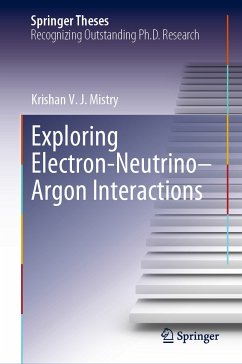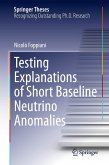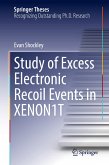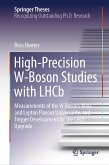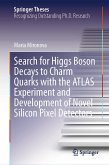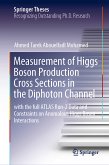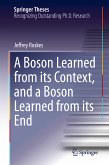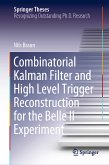This thesis explores the electron-neutrino and antineutrino cross section on argon using the MicroBooNE liquid argon time projection chamber detector.
With only a handful of electron neutrino cross section measurements in the hundred MeV to GeV range to date and only one of them on argon as the target nucleus: the result from the ArgoNeuT experiment, there is a need for new, large statistics, electron-neutrino cross section measurements. The precise knowledge of the electron neutrino cross section is fundamental for tests of lepton universality, making meaningful interpretations of neutrino oscillations and beyond the Standard Model search experiments involving electron neutrinos. Moreover, the appearance of electron neutrinos in a beam of predominantly muon neutrinos is the key signature in searches for sterile neutrinos in short-baseline experiments and measurements of Charge-Parity violation in long-baseline oscillation experiments.
The measurements in this thesisutilize the NuMI neutrino beamline which is highly off-axis to the MicroBooNE detector but provides a rich source of electron-neutrinos. Critical to the measurement of the cross section is a detailed understanding of the flux of neutrinos at MicroBooNE and the uncertainties associated with it. The neutrino flux prediction tools used for the on-axis NuMI experiments are described and studied in detail for their implementation in the case of MicroBooNE. These tools will form the foundation for many future measurements using the NuMI beam at MicroBooNE.
With the use of argon as a target for studying neutrino interactions, the large size of the nucleus introduces nuclear effects which impact the kinematics and multiplicities of the particles produced in the initial interaction. Such effects are complicated to model and are currently an active area of research with various models and neutrino generators available. The measurements in this thesis compare the electron-neutrino argon cross section to several neutrino generators with differing physics models. These comparisons provide important information in the modelling of neutrino interactions with nuclei such as argon.
The target audience for this thesis is aimed at particle physics graduate students, particularly in the field of neutrino physics working with noble element time-projection chambers.
With only a handful of electron neutrino cross section measurements in the hundred MeV to GeV range to date and only one of them on argon as the target nucleus: the result from the ArgoNeuT experiment, there is a need for new, large statistics, electron-neutrino cross section measurements. The precise knowledge of the electron neutrino cross section is fundamental for tests of lepton universality, making meaningful interpretations of neutrino oscillations and beyond the Standard Model search experiments involving electron neutrinos. Moreover, the appearance of electron neutrinos in a beam of predominantly muon neutrinos is the key signature in searches for sterile neutrinos in short-baseline experiments and measurements of Charge-Parity violation in long-baseline oscillation experiments.
The measurements in this thesisutilize the NuMI neutrino beamline which is highly off-axis to the MicroBooNE detector but provides a rich source of electron-neutrinos. Critical to the measurement of the cross section is a detailed understanding of the flux of neutrinos at MicroBooNE and the uncertainties associated with it. The neutrino flux prediction tools used for the on-axis NuMI experiments are described and studied in detail for their implementation in the case of MicroBooNE. These tools will form the foundation for many future measurements using the NuMI beam at MicroBooNE.
With the use of argon as a target for studying neutrino interactions, the large size of the nucleus introduces nuclear effects which impact the kinematics and multiplicities of the particles produced in the initial interaction. Such effects are complicated to model and are currently an active area of research with various models and neutrino generators available. The measurements in this thesis compare the electron-neutrino argon cross section to several neutrino generators with differing physics models. These comparisons provide important information in the modelling of neutrino interactions with nuclei such as argon.
The target audience for this thesis is aimed at particle physics graduate students, particularly in the field of neutrino physics working with noble element time-projection chambers.
